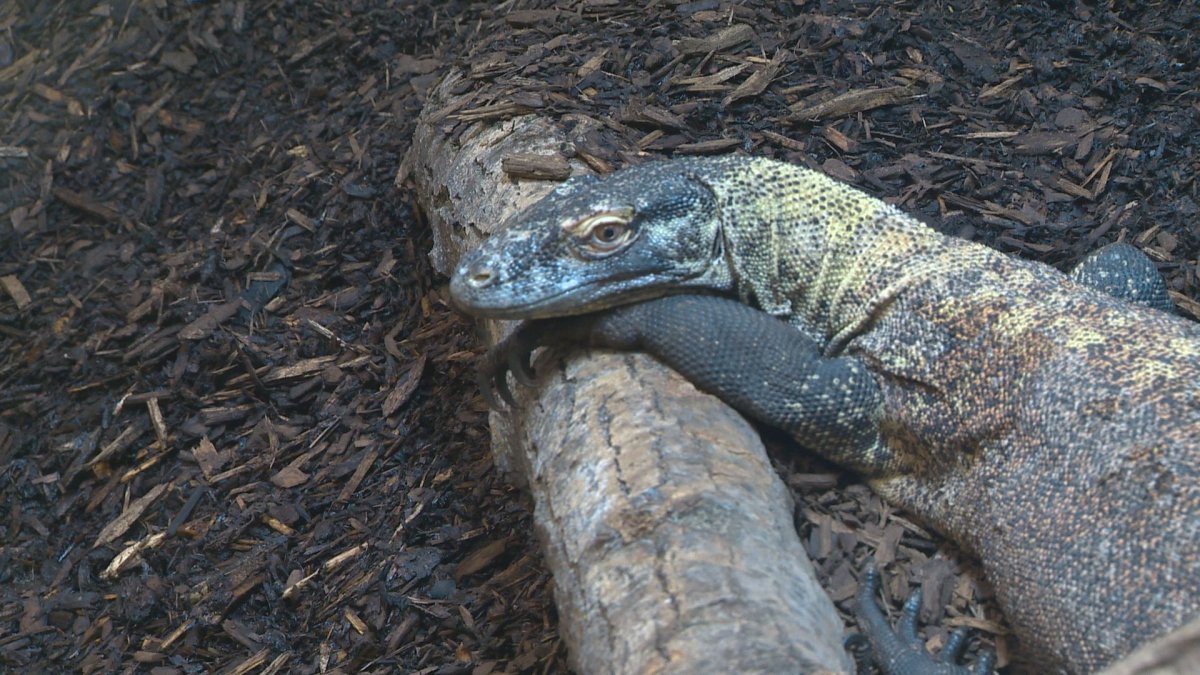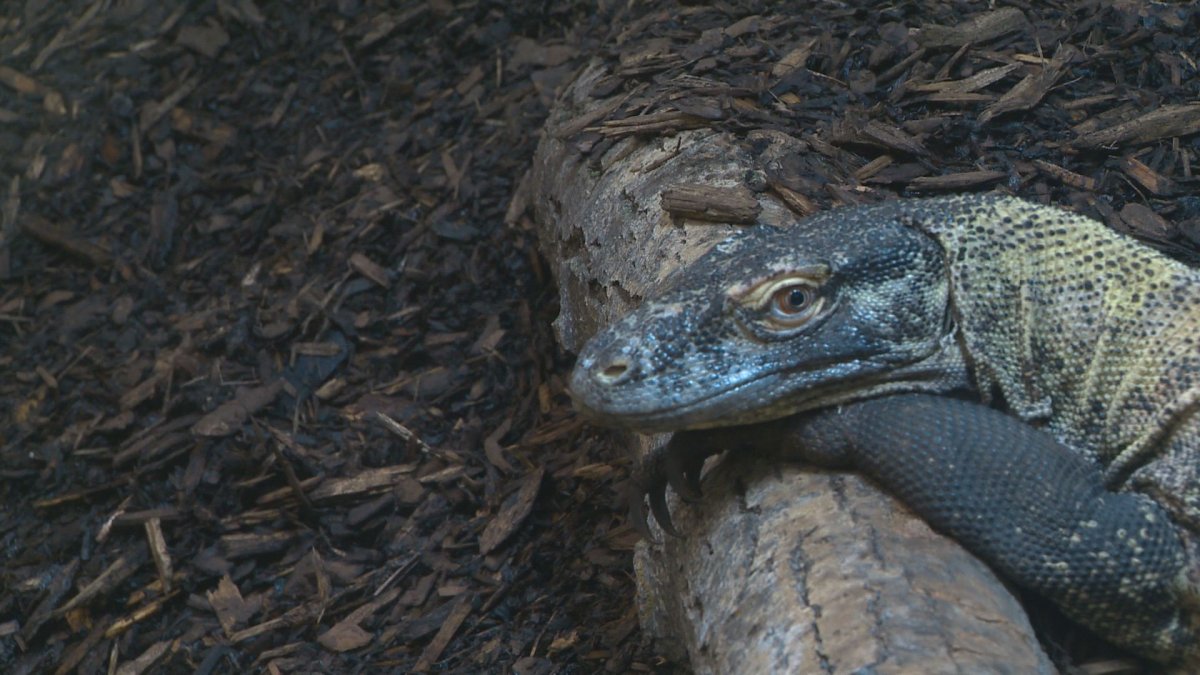The Edmonton Valley Zoo has welcomed some ferocious, flesh-eating Komodo dragons for the summer. The sisters, Ophelia and Saphira, will live in a special, climate-controlled enclosed habitat in the Saito Centre. The temperature inside the habitat is between 35 C and 40 C with 70 per cent humidity.

Komodo dragons are the largest lizards on Earth and are found in the Lesser Sunda region of the Indonesian Islands, where they are an apex predator — meaning they are at the top of the food chain.
READ MORE: Giant killer lizards roamed with early Australians: study
“They can get up to, the females can get to seven-and-a-half feet, and the males eight-and-a-half feet, so they get actually quite big,” said Wade Krasnow, animal care team leader at the Edmonton Valley Zoo.
Being only four years old, the Valley Zoo’s lizards are about 1.5 metres, or five feet, long. Komodos can live for up to 30 years and are carnivores that hunt live prey as well as eat dead animals.

Get daily National news
“They do eat carrion and meat, and they will hunt animals as well. Small animals, large animals — even up to the size of a water buffalo,” Krasnow explained, adding they are also patient when hunting.
“They’re very efficient hunters. What is remarkable about them is they are venomous,” Krasnow said, explaining that the venom can inhibit blood from clotting. The Komodo dragon also has a lot of bacteria in its mouth.
“The bite then becomes infectious, and after a while, the animal will die from infection. And the Komodo dragon will follow it because they use scent a lot for finding prey, and of course they can smell the decaying flesh from that animal. So once it dies they will feast on it. They can eat 80 per cent of their body weight in one meal.”
Krasnow said the lizards can also run up to 20 kilometres at a time. While attacks on humans are rare, the lizard has been known to kill humans.
Krasnow said this is the first time the valley zoo has had venomous creatures and special precautions have been taken to protect zookeepers.
“We have herding boards to keep them away from us when we go in there. We work with two people. We have all kinds of protection — steel-toed boots, gloves and everything. So a lot of safety is involved in working with these animals.”
READ MORE: Oldest Komodo dragon in captivity dead: Calgary Zoo
The lizards are on loan from the Calgary Zoo until October. The Calgary Zoo also loaned two of the lizards to the Saskatoon Zoo earlier this year.
WATCH: New home for Saskatoon zoo’s 2 Komodo dragons unveiled

After leaving Edmonton they will be sent to Memphis to take part a breeding program. Fun fact: Komodo dragons can breed with and without the benefit of male companionship.
While they can mate sexually, female Komodo dragons can also take part in an asexual method of reproduction called parthenogenesis. However due to genetics, only male lizards will hatch, according to Scientific American.


















Comments